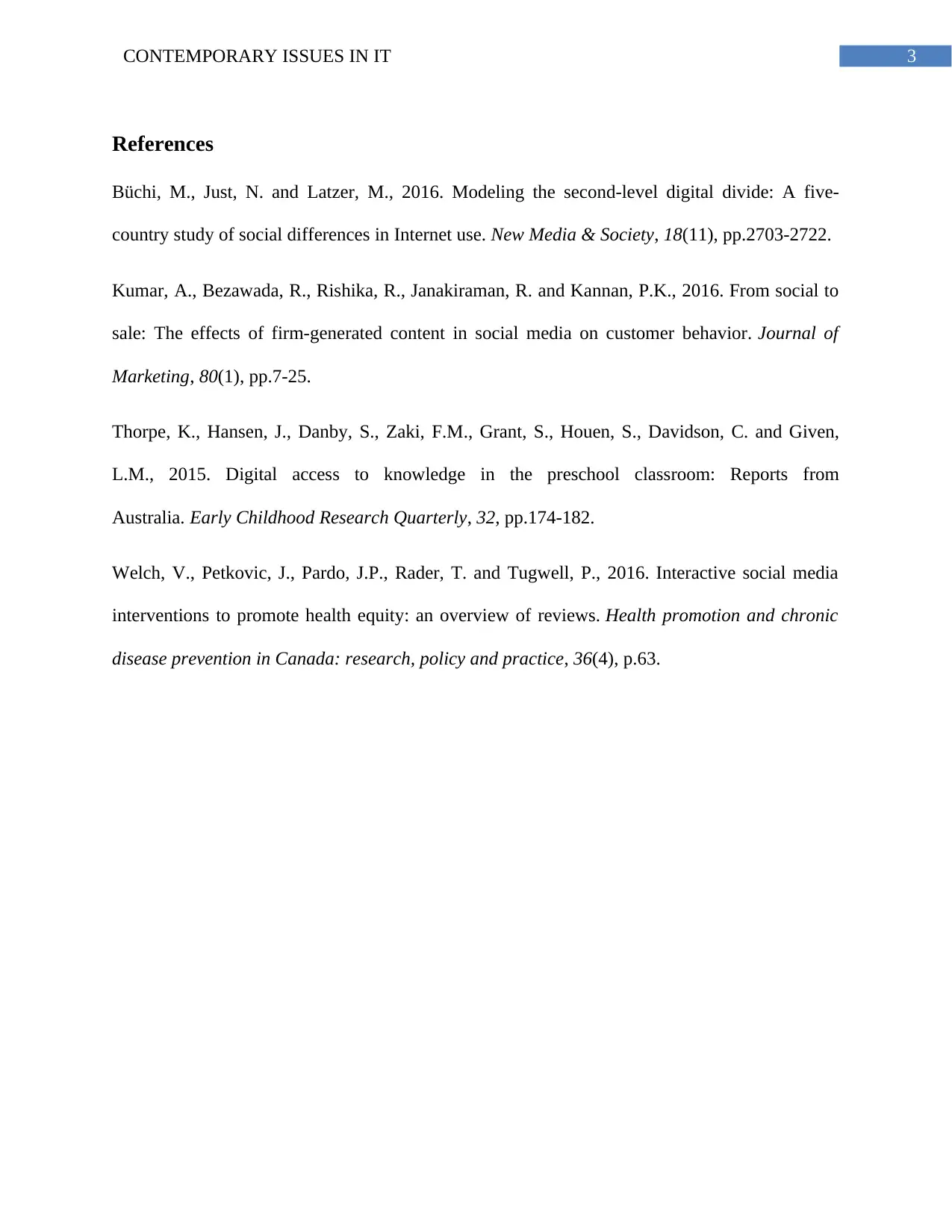Analyzing Internet Access: A Contemporary Issue of Social Equity in IT
VerifiedAdded on 2023/06/05
|4
|804
|193
Essay
AI Summary
This essay explores the contemporary issue of internet access as a matter of social equity within the field of Information Technology. It delves into the concept of the digital divide, highlighting the disparity between those with and without reliable internet access, and its connection to digital inequality. Drawing on various studies, the essay examines how limited internet access can exacerbate knowledge gaps and create disparities in opportunities. It emphasizes that the digital divide is not a binary issue but exists across a spectrum, akin to literacy levels. The essay also touches upon the role of internet access in education, emphasizing that technology alone cannot solve educational challenges but must be integrated into comprehensive national policies to maximize its impact on student outcomes, job opportunities, and national development. The essay concludes by asserting the internet's central role in modern society and the importance of addressing the digital divide to promote social equality.
1 out of 4











![[object Object]](/_next/static/media/star-bottom.7253800d.svg)